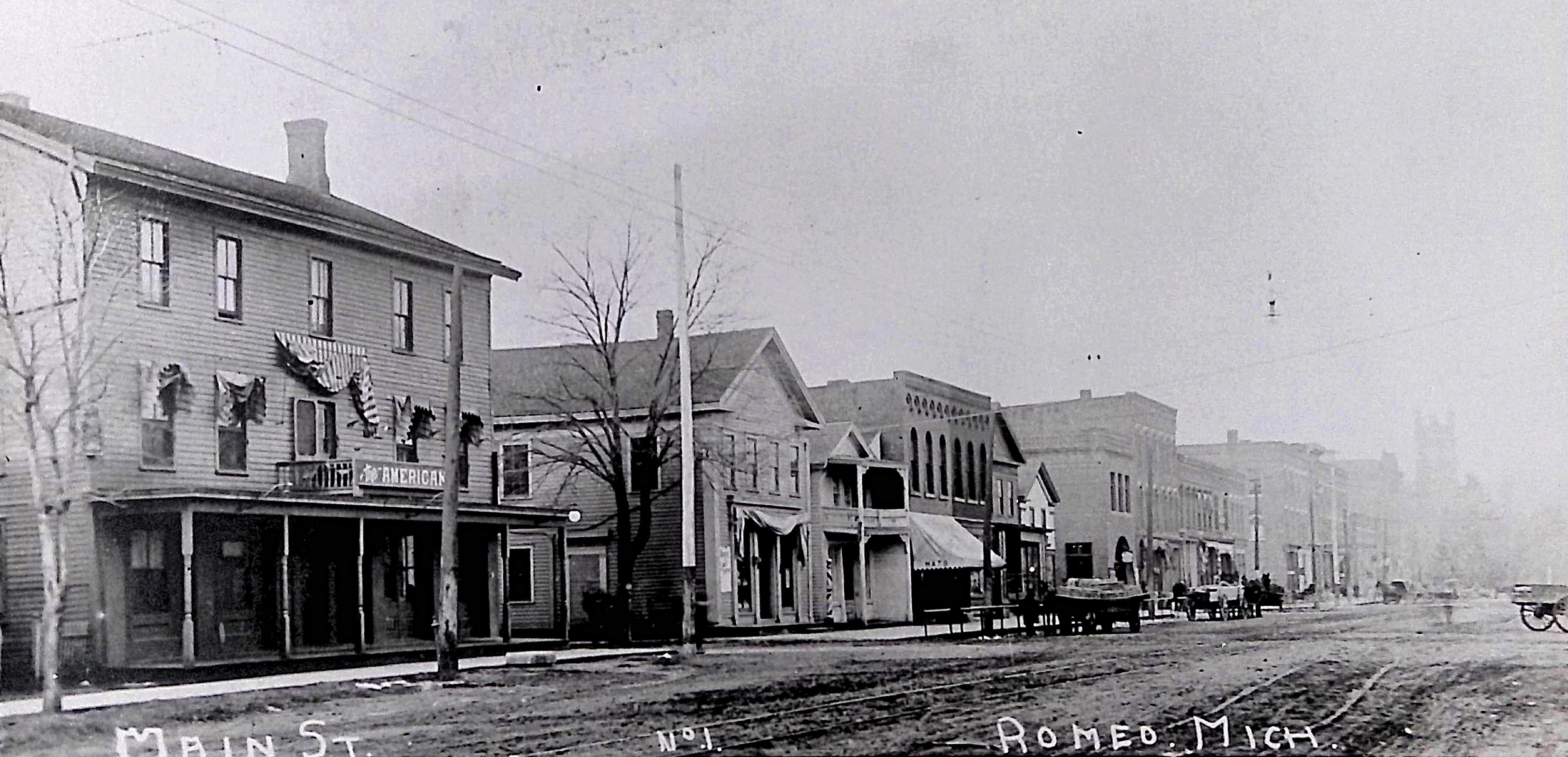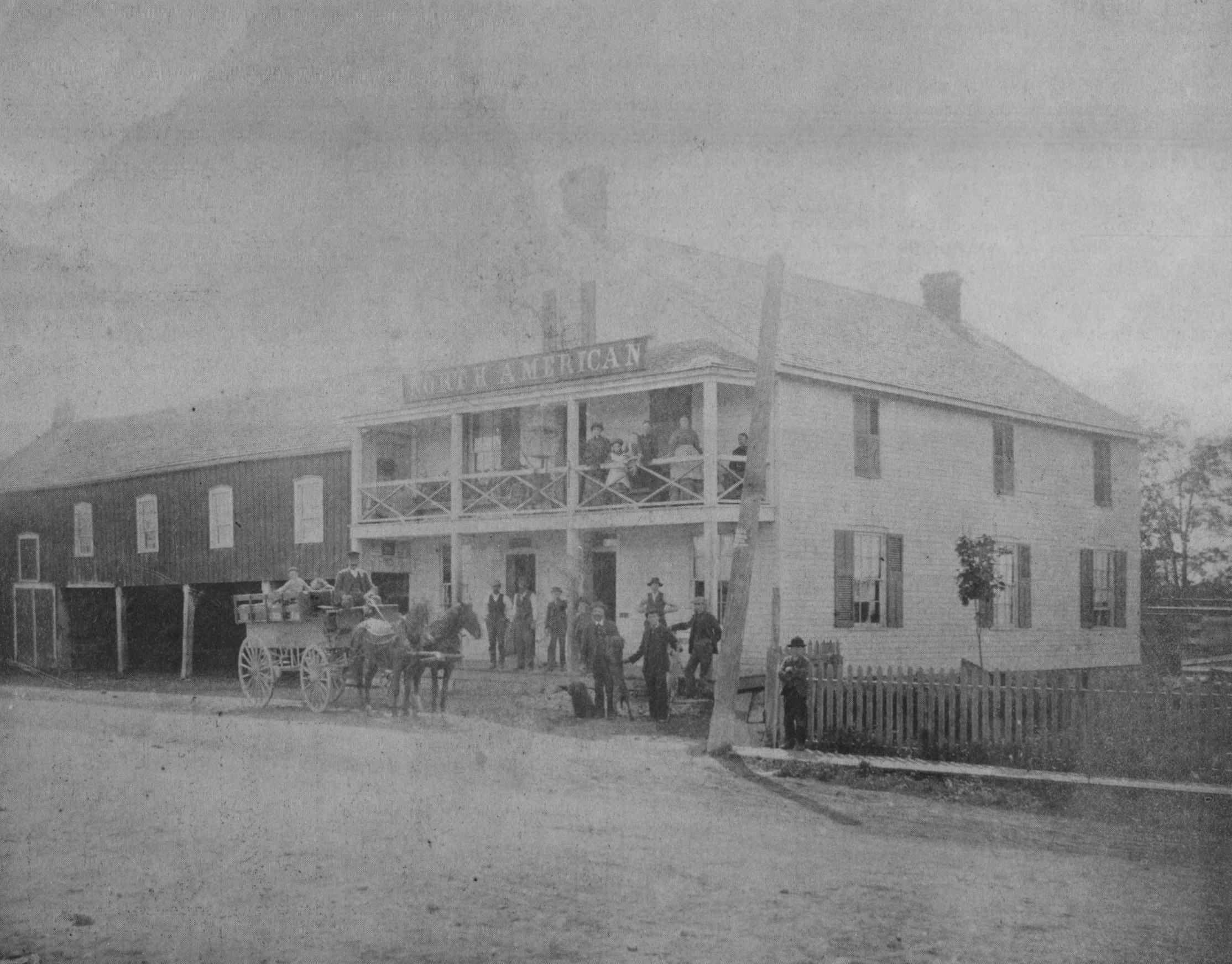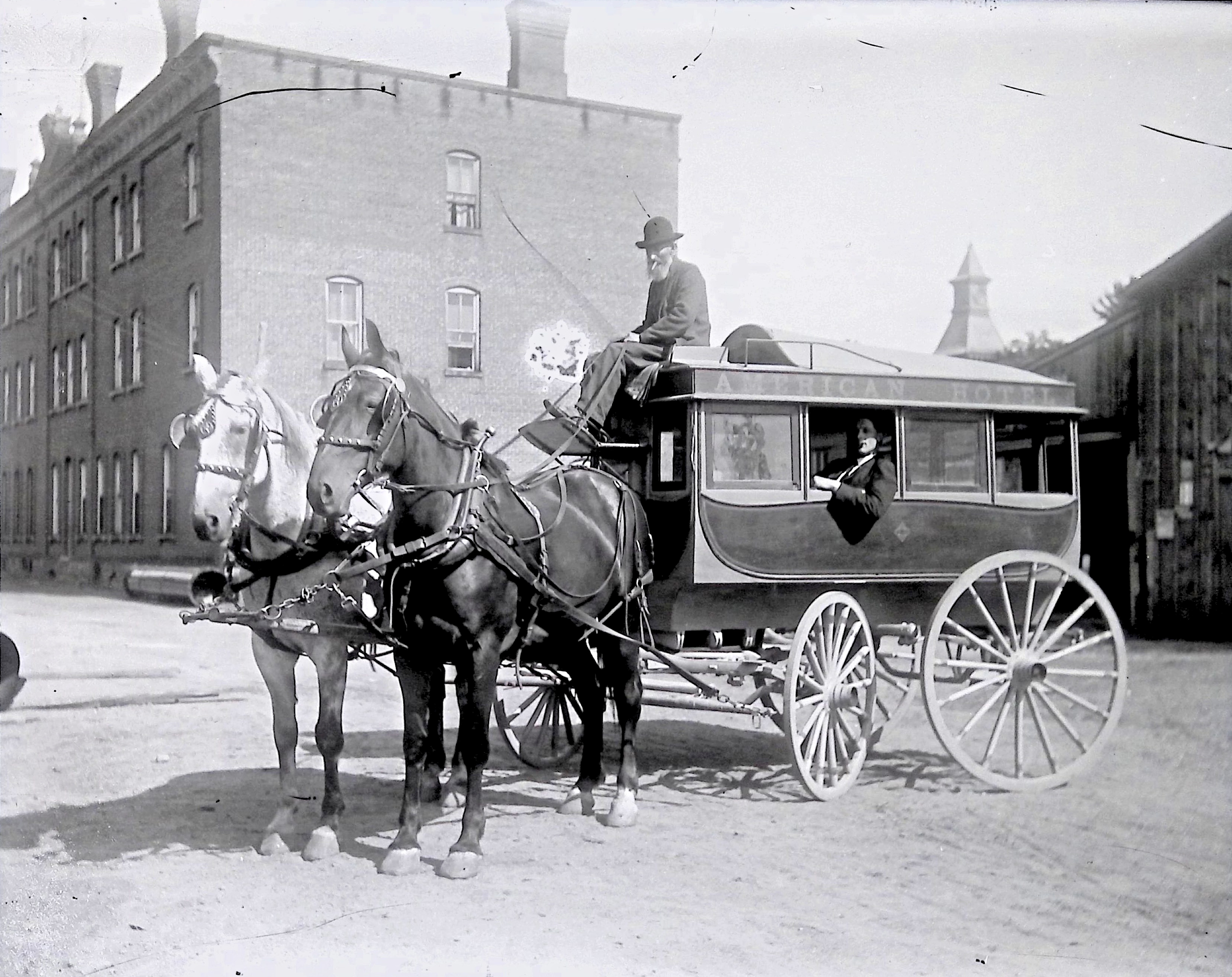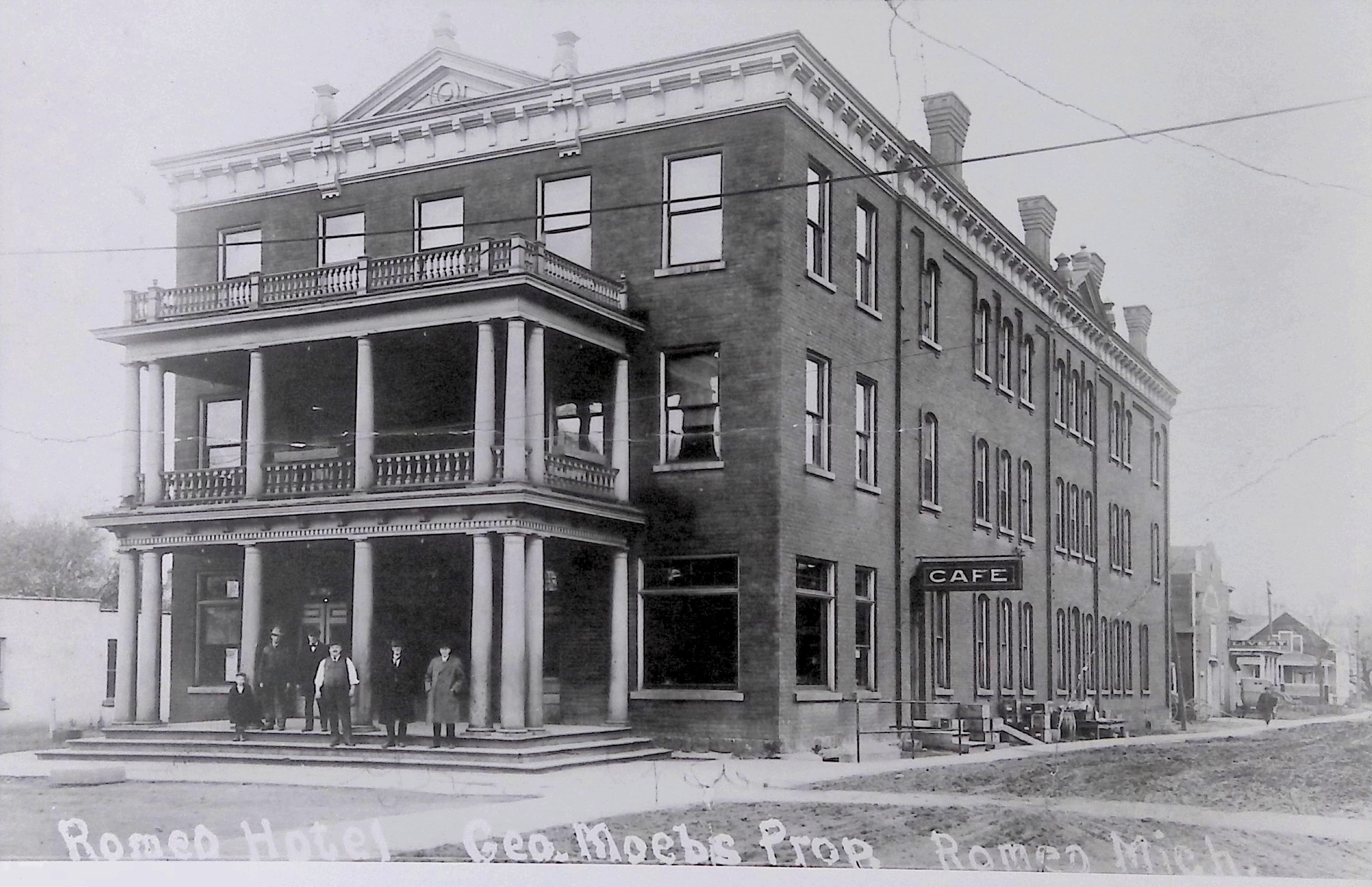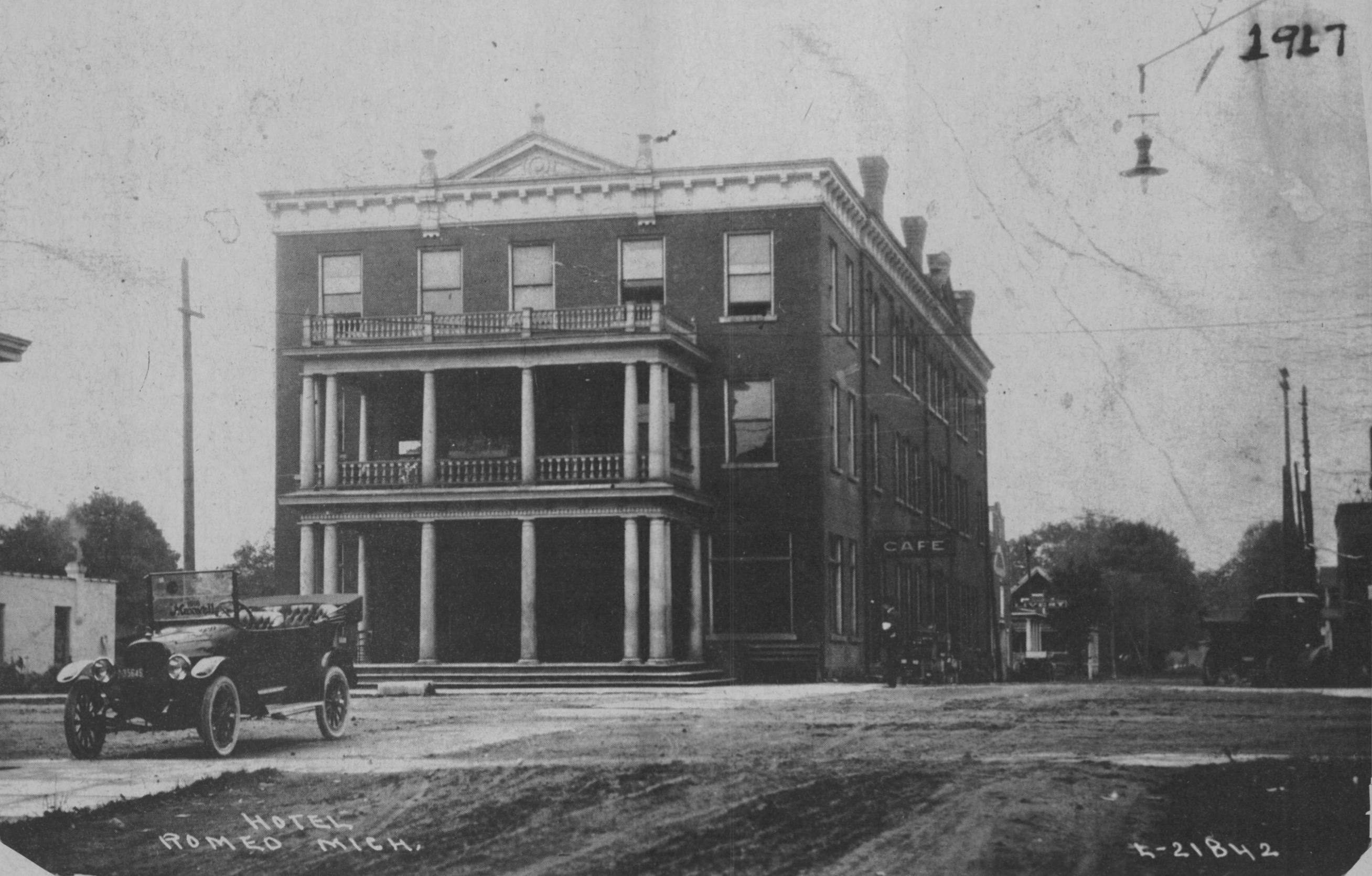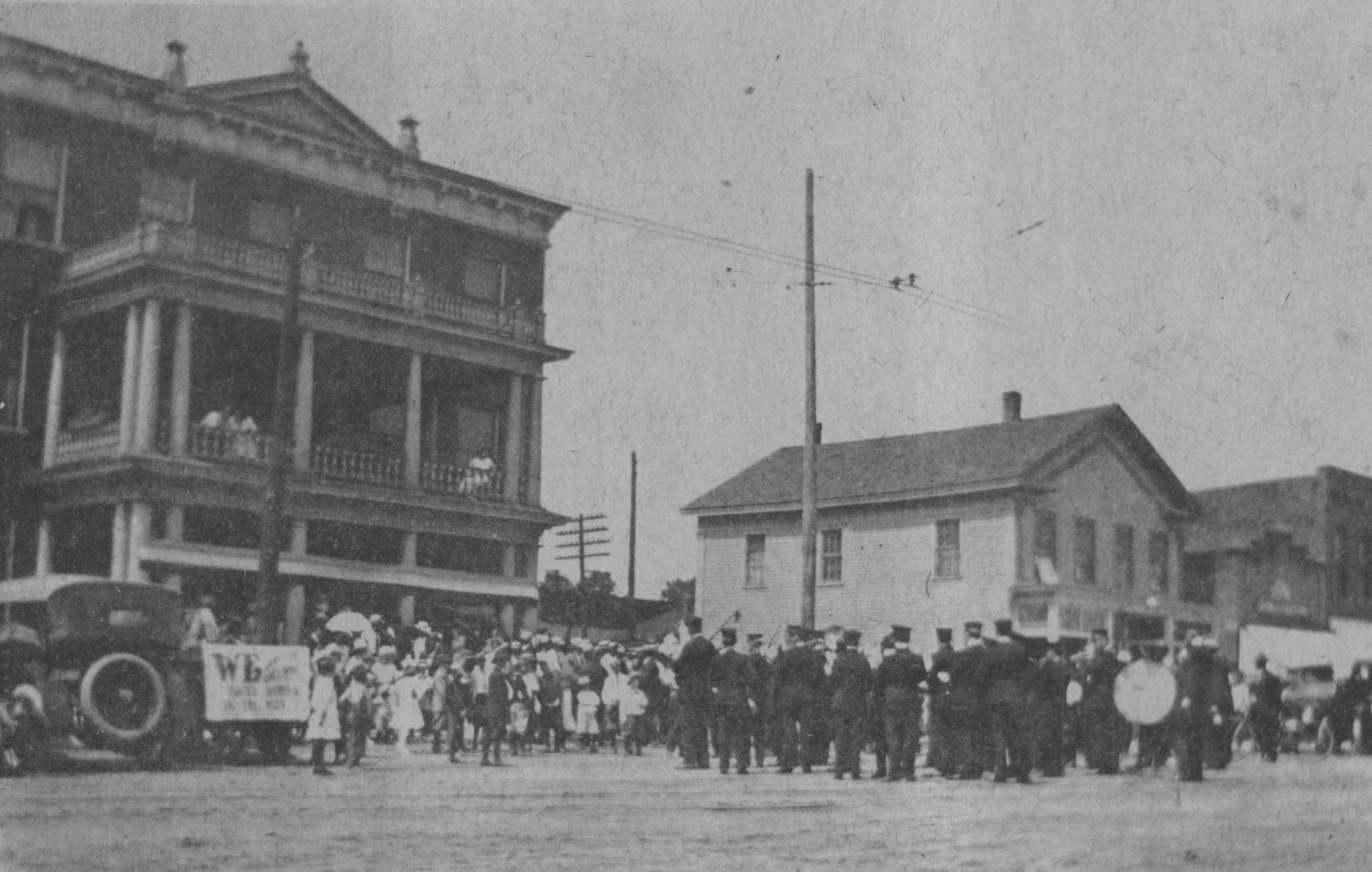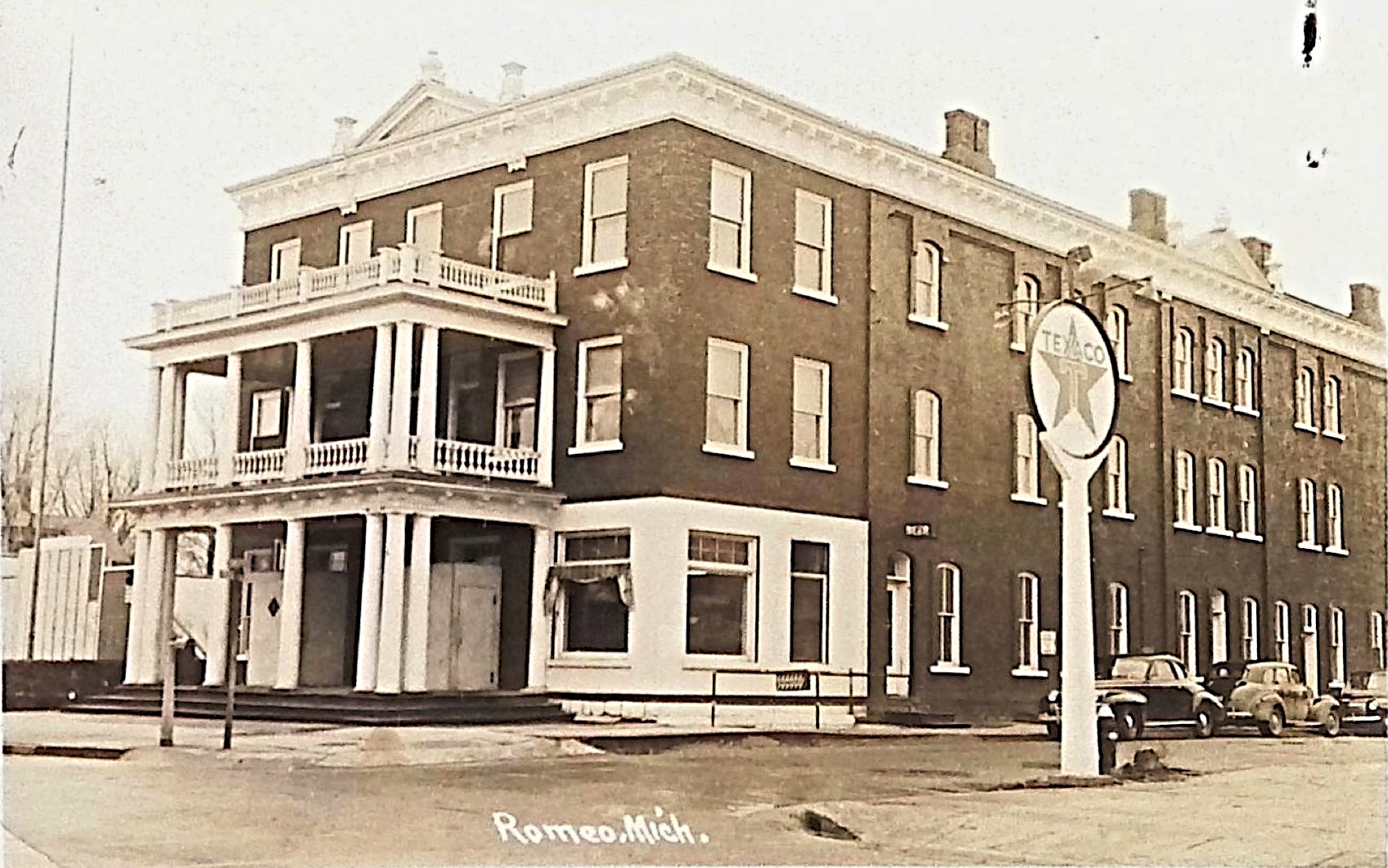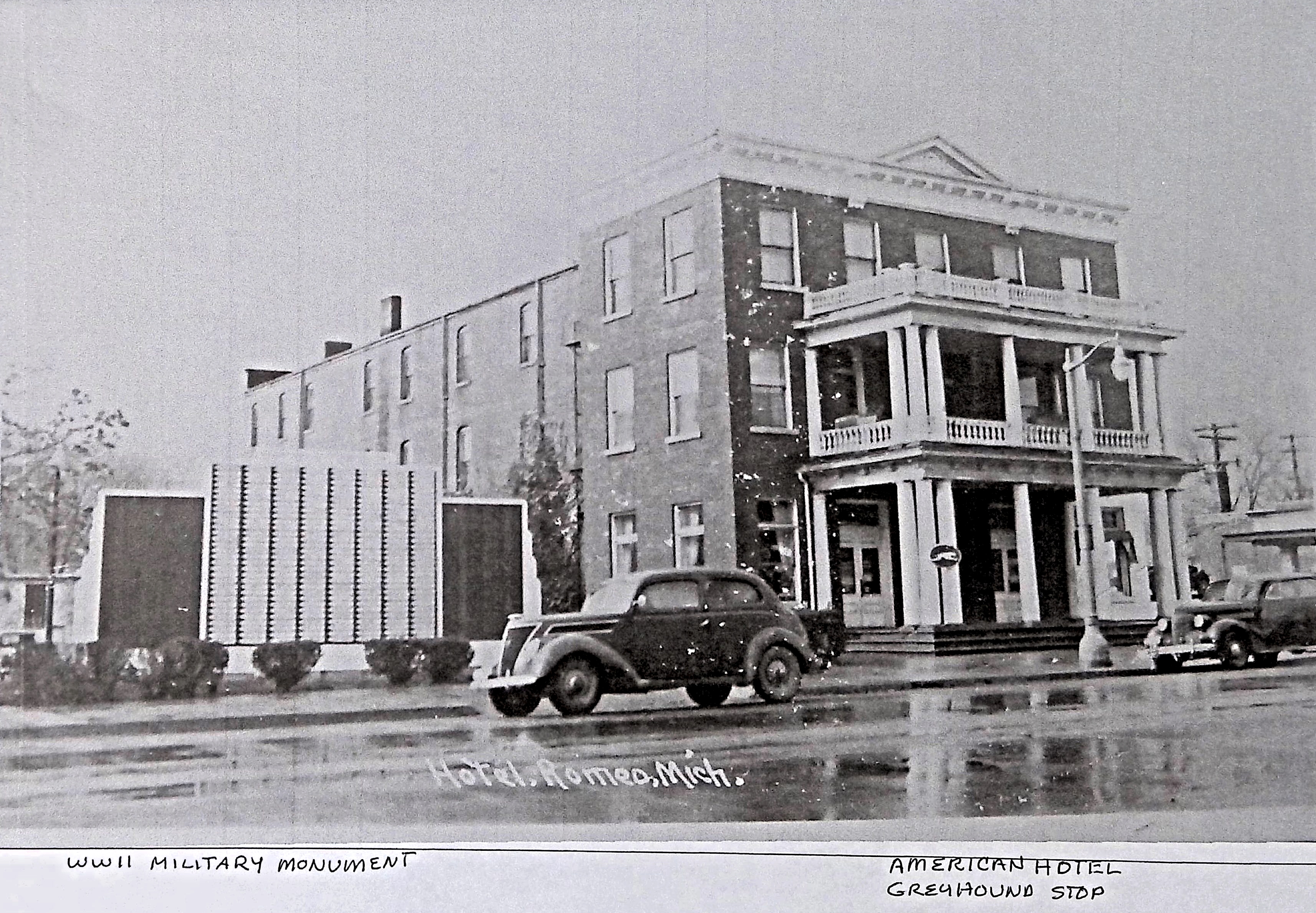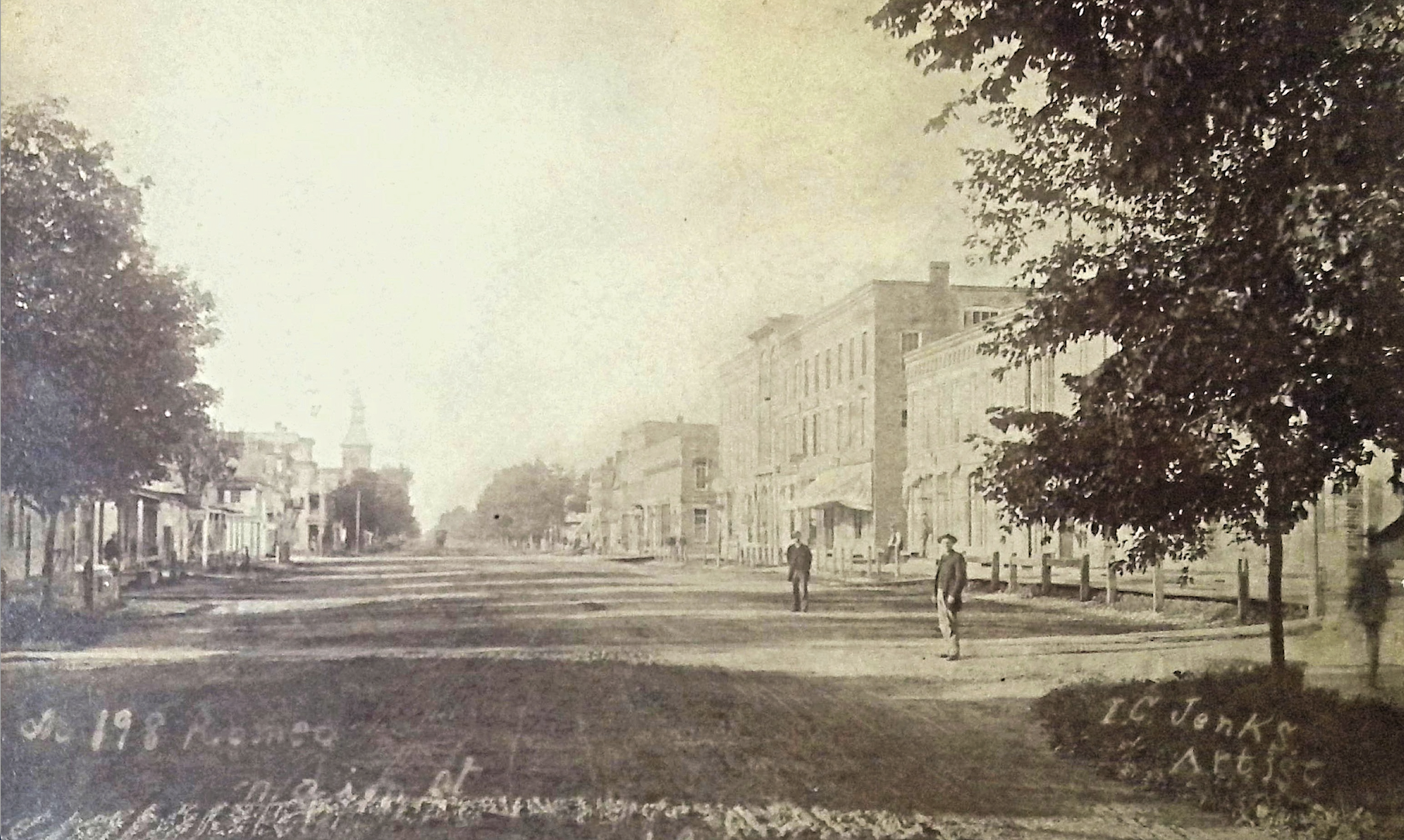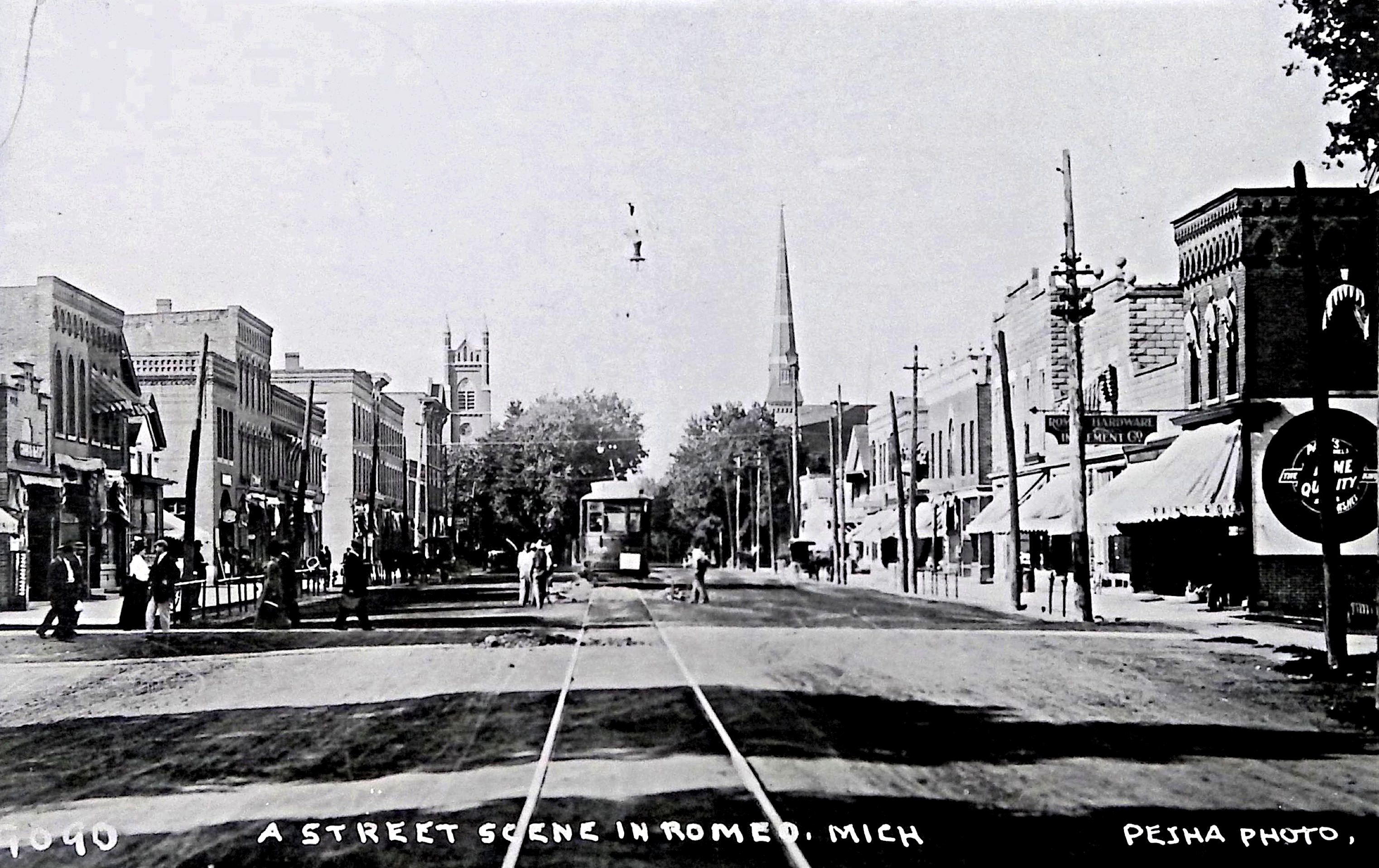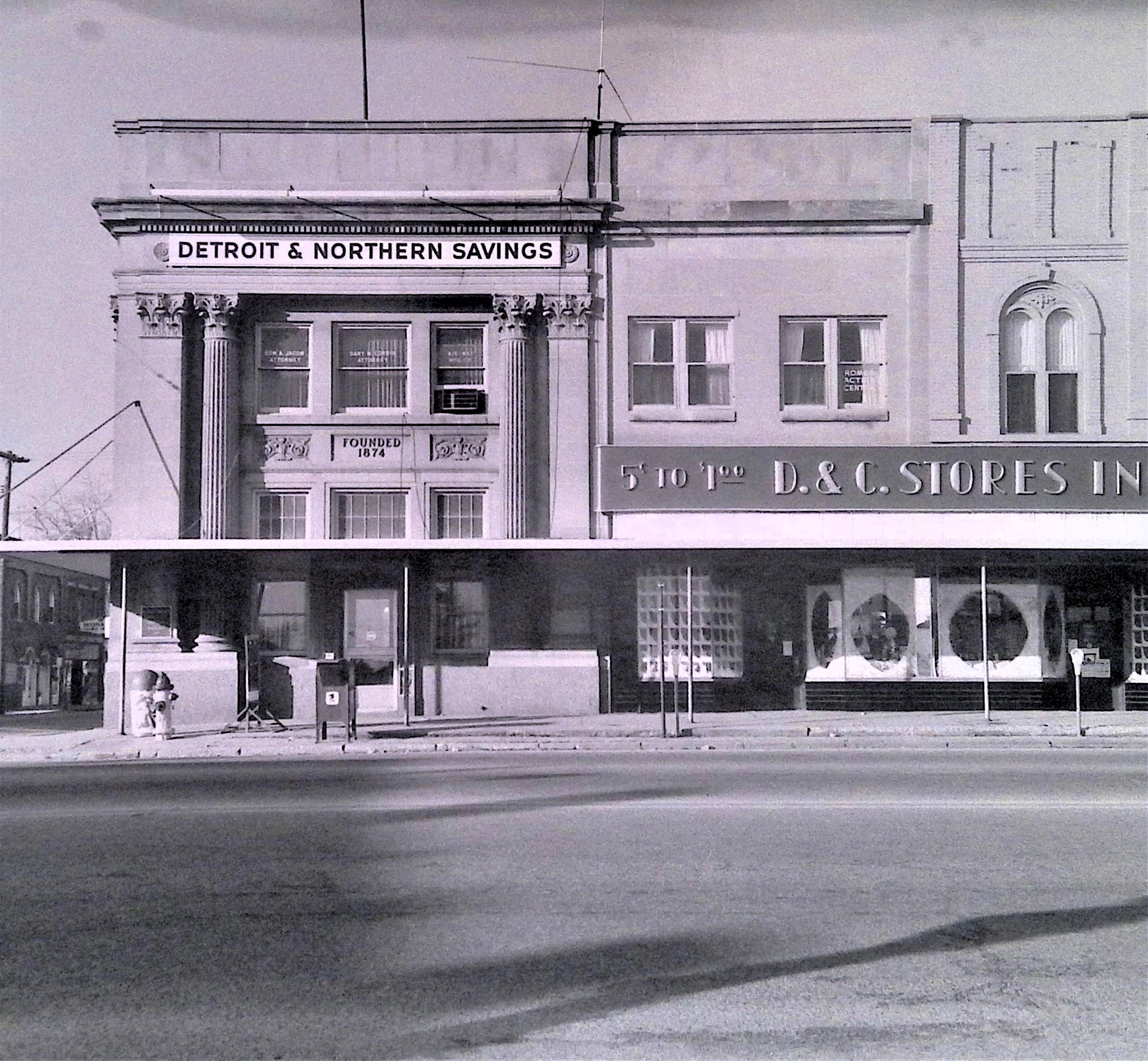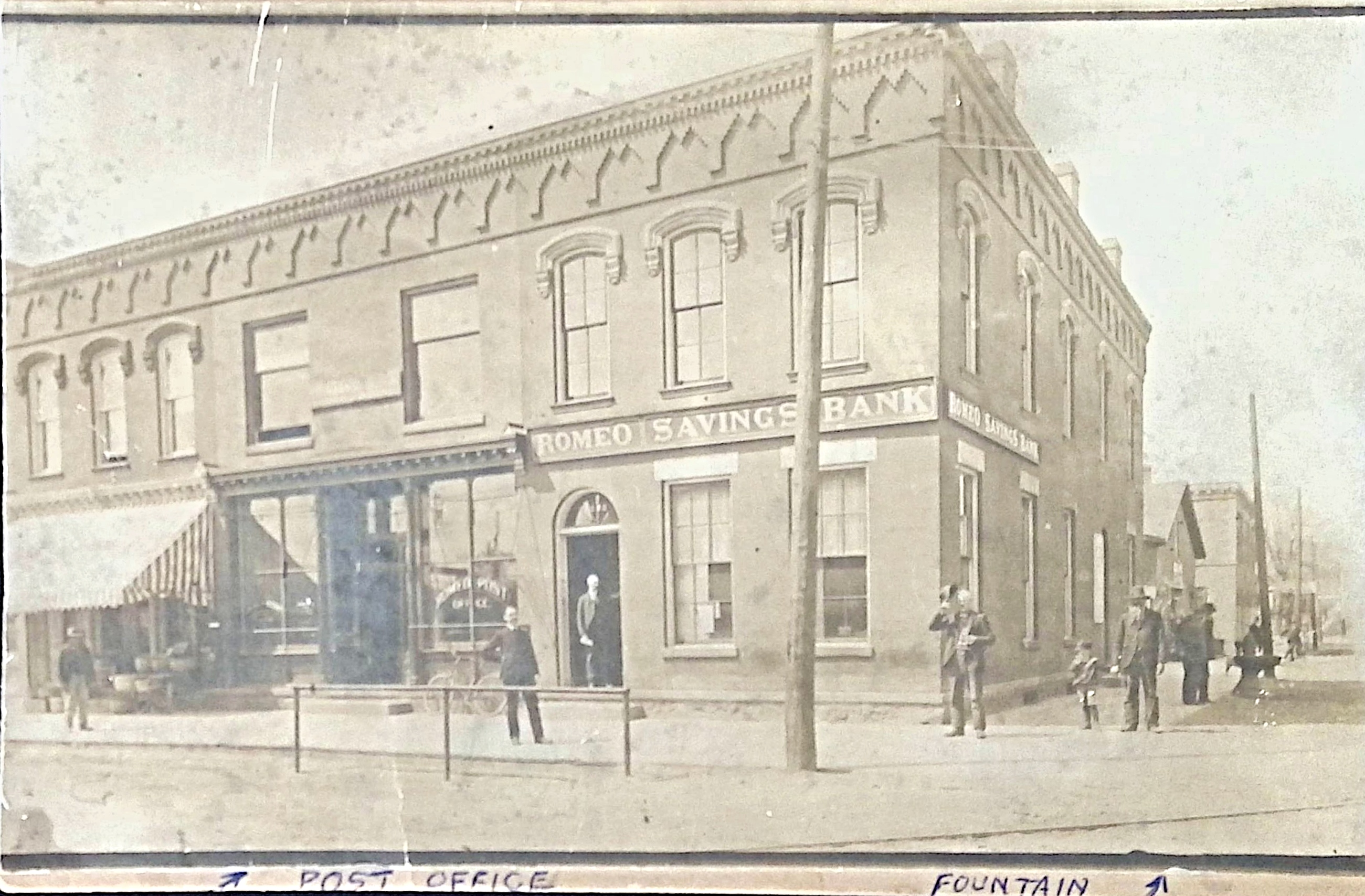
The American Hotel
Built in the early 1860s, the American Hotel served as a refuge for visitors. It expanded in 1881 and included a dining room, billiards room, barber, and saloon.4 Starting in 1903, the hotel had its own transportation service where guests were able to use the horse and buggy service to travel anywhere in the village limits. Over the years, it had other names, including the North American, the Dewey, and the Golling. A new brick front was added in 1906 and was then named the Romeo Hotel which remained its name until it was demolished in 1960.8 The site where the hotel was is where the Speedway gas station is today.


